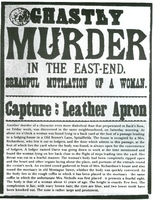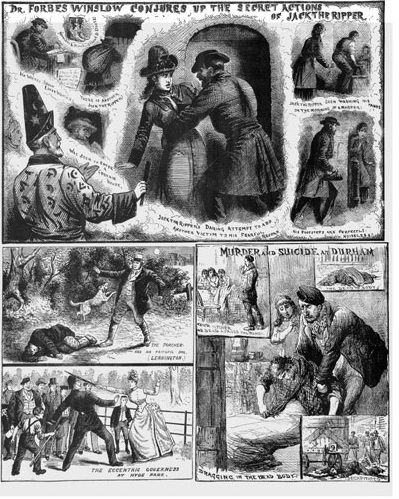On August 31, 1888, Mary Ann Nichols was found dead in the early morning, around three o’clock on Buck’s Street in Whitechapel, London. Upon further examination, the police deduced that she had suffered several gashes along her body and neck, with there also being signs of strangulation. This gruesome killing was the first of the five infamous ‘Whitechapel murders’ - the five canonical victims of the notorious serial killer Jack the Ripper.
Since 1888, Jack the Ripper has captured the attention of the public eye; the grisly nature of his five murders both shocked and intrigued the people of London, as it peaked their morbid curiosity, due to this being one of the most famous criminal investigations of the time. Since those initial killings and the subsequent new coverage, Jack the Ripper has appeared in popular modern media, like films, television shows, and video games, and to this day he remains an ‘iconic’ figure of history shrouded in mystery, for better, or for worse. But what makes the Ripper so captivating that he has transcended time and place and remains a symbol of fear? The nature and victims of his murders, though tragic and horrifying, were not special or unique; nor was he the first major serial killer of the time. Rather, the reason Jack the Ripper was and remains a famous figure is due to the unique combination of sensationalism and news coverage around the actual murders, as well as the location and period the murders took place.
During the time of the murders, Whitechapel was deemed a slum. It was home to many working-class immigrants and sex workers, causing many pre-existing xenophobic and classist ideologies to thrive in Whitechapel, as it was seen as a dangerous and dirty in relation to all of London. The five canonical murders were all women who had done sex work in the past to support themselves. These women, Mary Ann Nichols, Annie Chapman, Elizabeth Stride, Catherine Eddowes, and Mary Jane Kelly, were often marginalized by society, not only because of their socioeconomic status but also due to the stigmatization of sex work. Their vulnerable positions made them easy targets, and their murders were initially met with a disturbing lack of urgency from both the public and the authorities. The brutal nature of the crimes, however, eventually drew widespread media attention, which further sensationalized the events and often focused more on the lifestyle of the women, rather than on seeking justice. This media portrayal further entrenched societal biases, portraying the East End, more specifically Whitechapel, as a breeding ground for vice and violence, and reinforcing the divide between the wealthy and the impoverished.


